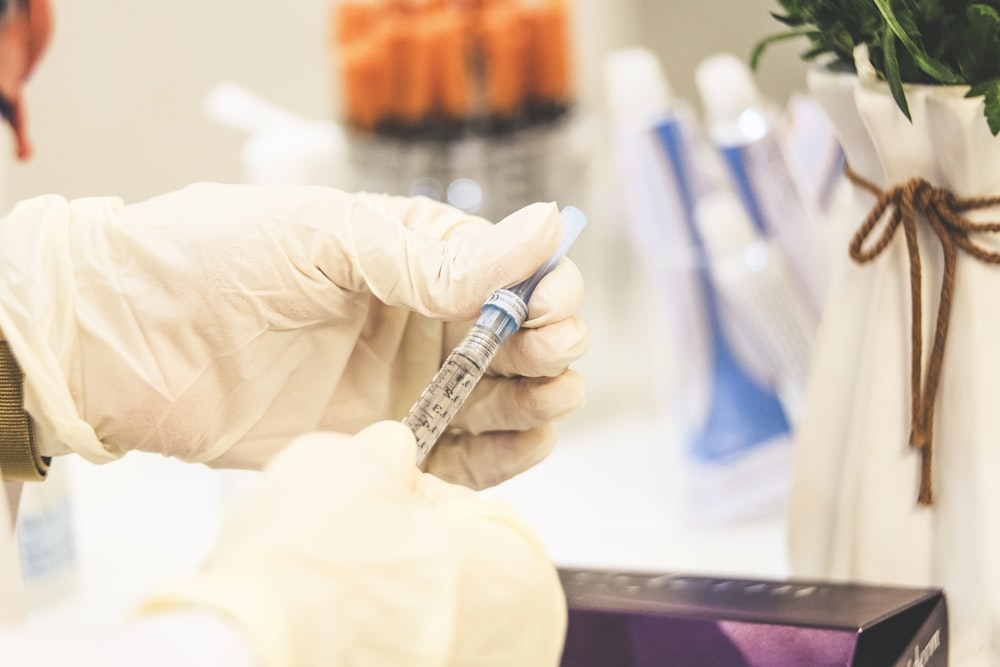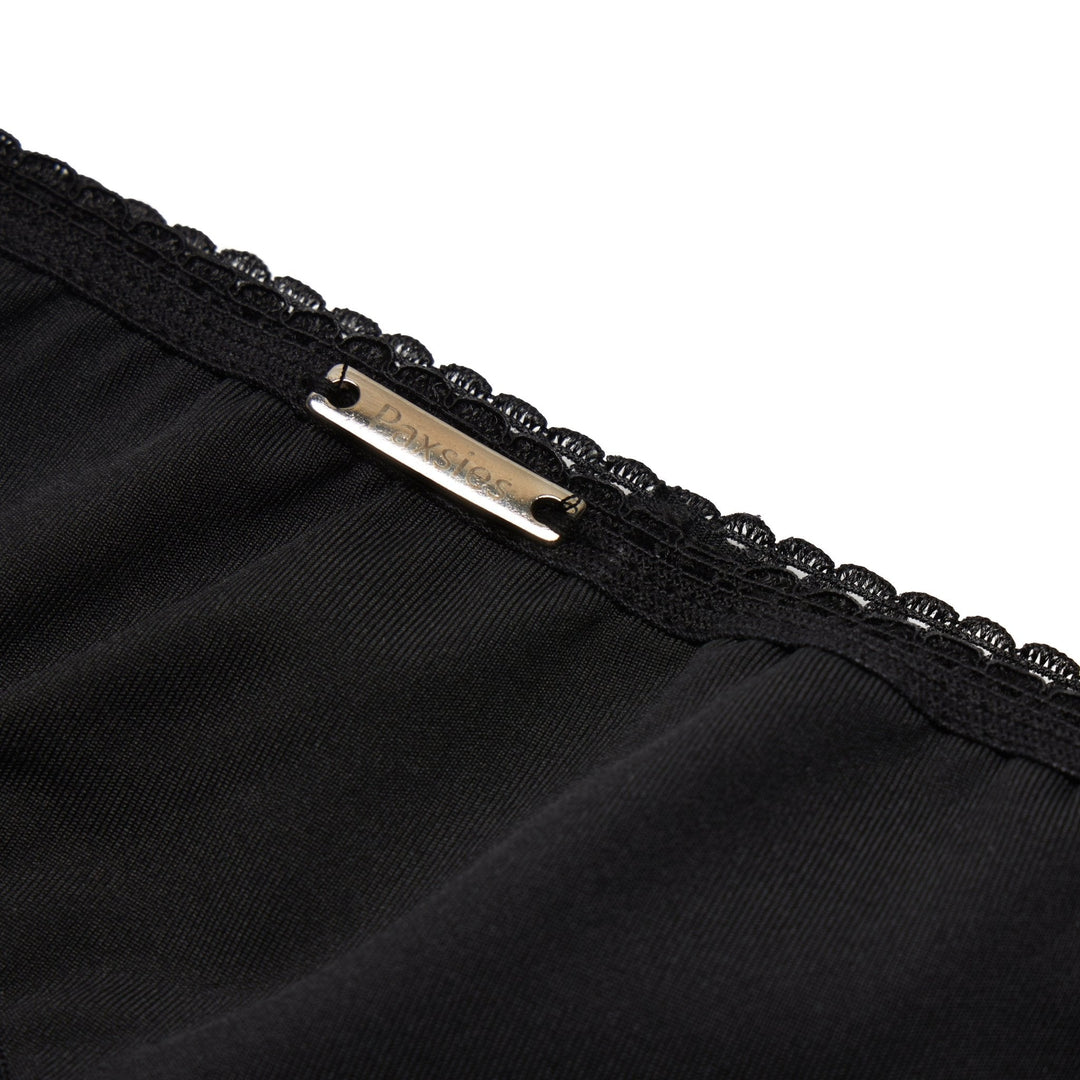What's The Best Way to Inject FTM Testosterone?
The information below is for educational and entertainment purposes only and should not be used as medical advice. It does not replace or represent the advice of a medical professional.
The medical FTM (female-to-male) transition nearly always starts with the injection of testosterone into the body. Testosterone is the primary male sex hormone, and is created in cis men’s testicles and also in small amounts in cis women’s ovaries. It’s the hormone that causes masculinization of the body. Since trans guys can’t produce it in the same quantities as cis guys do, it has to come from outside of the body. This usually happens in the form of regular self-administered injections.
That being said, it's common for people considering HRT to ask how to inject testosterone in a safe way that minimizes the pain and discomfort associated with injections. The idea of self-administering your t-shots might seem scary for some - most trans guys have never given an injection before! However, trans guys are not alone. Various fertility drugs, vitamin B12, insulin, epinephrine, and cancer medications are also often self-administered an an injection. There are several ways to make the experience as smooth as possible, and in this article, we’ll take you step by step through the process of injecting testosterone.
What needle do I use?
First, you need to know what gear to use. There are three main types of injections: subcutaneous injections, intravenous injections, and intramuscular (IM) injections. Subcutaneous means under the skin and these injections are quite shallow. When injecting intravenously, you inject directly into the vain. Testosterone, however, is generally injected intramuscularly, meaning directly into the muscle, so the needle you need will be longer and thicker compared to those used for subcutaneous injections. This is also the reason why these injections are described as more painful (Güneş, 2013). Fortunately, injection needles have gotten much sharper over time, reducing the pressure needed to insert them and therefore reducing the pain. The needle thickness, or gauge, for testosterone, is generally around 22 to 25 gauge (the larger the number, the thinner the needle). The needle length depends on your body, but is usually between 1-1.5 inches/ 2.5-3.8 cm.
“Be cautious of blunt needles! This obviously will significantly increase the pain of the injection. Make sure to switch up your needles after each use to avoid this!
Preparation before injection
Before the injection, have a hot shower to relax your muscles and your mind. Also, warm up your testosterone to body temperature or a bit above that. This can significantly reduce the discomfort you feel when the fluid spreads in the muscle. Find a comfortable place in a well-lit room where you know you won’t be interrupted. Make sure you have the vial with the T, syringes, the needle, alcohol swabs, a plaster, and a puncture-proof sharps disposal container at the ready. If you didn’t take a shower beforehand, make sure you have washed your hands properly!
Where do I inject the testosterone?
Several IM injection sites lend themselves very well for testosterone injections. You need to find a vascular site, meaning it has vessels that run through your body. That way, when the testosterone is injected, it can travel where it needs to be in the body and work its masculinization magic. Additionally, areas with less subcutaneous fat are usually less painful. Several sites fit those criteria above very well: the arm, thigh, and hip/buttocks. However, if you choose to inject the testosterone all by yourself, the hip or buttock can sometimes be challenging to reach and is not advised!
The important thing is to keep rotating the injection area between each injection. A study found that cell injury occurs at injection sites, regardless of the substance injected (Treadwell, 2003). It’s essential to leave the site to recover for a minimum of a week. This will further reduce the unpleasant sensations linked to injections.
The injection technique
Place the needle carefully on the syringe, uncap the needle, and put the needle into the vial by puncturing the rubber in the middle. Fill the syringe with the prescribed dosage of testosterone and remove any air bubbles that might be in the syringe by flicking the syringe with your finger. Meanwhile, make sure the needle doesn’t touch anything else. It is also advised that you switch out needle after you draw the testosterone into the syringe, to make sure that the needle you use for injection is as sharp as possible.
There are two common injection techniques that are known to be the least painful for IM injections; the Air-lock injection technique (ALT) or the Z-track (ZT-) method. In some evidence-based studies, the ALT is found to be less painful (Najafidolatabad et al. 2010), while in other studies, it was vice versa (Ehsani et al. 2011), or even equally divided (Tambunan & Wulandari, 2015). We suggest you conduct further research and decide what's best for you!
With the Air-lock injection technique, a small amount of air is drawn into the syringe, the skin is held flat, and the needle should be put in at an angle of 45 degrees. The testosterone is injected, followed by the small amount of air that was put in before. The needle is taken out, and the skin is let loose. The idea is that the air is keeping the T locked in the muscle, preventing it from flowing back into the subcutaneous layer where there are more pain receptors.
The Z-track technique has the same outcome with a different method; firmly hold the skin tight with your free hand, insert the needle directly at a 90-degree angle, inject the testosterone, pull the needle out again at the exact same angle, and release the skin to its original position. This movement should form a Z which prevents the fluid from surfacing again.
Regardless of what exact technique you’ll use, always disinfect the injection site with alcohol beforehand. Use alcohol swabs to wipe the injection area, and let the skin dry again before injecting to avoid unnecessary stinging from the alcohol. If it’s your first time, it can be uneasy or even scary, but over time you’ll get used to it and even become an expert!
However, the most direct way to reduce any pain is to reduce the amount of movement the needle makes. Make sure the needle goes straight in, without any detours! Before you inject, pull the plunger a little bit to see if any blood comes out (this is called aspirating). If there is no blood, proceed with the injection. If some blood does come into the syringe, pull the needle out, replace it, and try again. Don't worry! Practice makes perfect.
How much and how often should I inject?
The injection volume depends on the person and their prescription. If you choose to inject more testosterone every time, the less often you have to do it. On the other hand, injecting more testosterone at once can also lead to more discomfort. It also depends heavily on the type of testosterone you administer. Keep in mind that hormone replacement therapy is individually tailored, and therefore you should always discuss the volume and frequency of your injections with your physician.
Aftercare
After the injection, safely dispose of the needle and syringe. From there, there are a couple of things you can do to minimize discomfort. You can apply a gel with arnica as the ingredient. Arnica is a herb that is known to reduce swelling. You can put some ice on the injection site. Make sure not to put the ice directly on your skin! We suggest wrapping a towel or a cloth around the ice. Additionally, you can massage the injection site, but this also comes down to personal preference. Try and see what works best for you.
Some pain or discomfort after injection can happen, usually within a day or so, but we hope that a combination of the above tips and tricks will help you (or someone you know) reduce or even eliminate the discomfort that comes with testosterone injections. Find out what works best for you and be patient; it will get better over time, and the results are worth it!
Check out the video below from Sam Collins to see how to inject your T shot
Sources
- Agaç E, Günes UY. Effect on pain of changing the needle prior to administering medicine intramuscularly: a randomized controlled trial. J Adv Nurs. 2011 Mar;67(3):563-8.
- Ehsani, Maryam, et al. "A comparative study on pain severity caused by Z-track and air lock methods for intramuscular injection." Journal of Ardabil University of Medical Sciences 11.4 (2011): 309-315.
- Terry Treadwell, Terry. “Diagnostic Dilemma: Intramuscular Injection Site Injuries Masquerading As Pressure Ulcers. WOUNDS. 2003;15(9):302-312.
- Najafidolatabad SH, Malekzadeh J, Mohebbinovbandegani Z. Comparison of the pain severity, drug leakage and ecchymosis rates caused by the application on tramadol intramuscular injection in Z-track and Air-lock Techniques. Invest Educ Enferm. 2010; 28(2):171-175
- Tambunan, Evelyn Hemme, and Imanuel Sri Wulandari. "Utilizing Z-track Air Lock Technique to Reduce Pain in Intramuscular Injections." Jurnal Ners 10.1 (2015): 112-117.











